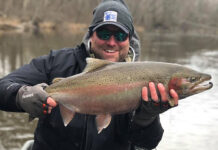Composting is a valuable tool. It allows us to turn our leaves and food scraps into valuable fertilizer that can enrich soil and plants through a natural process of recycling organic matter. According to the U.S. Environmental Protection Agency, food and garden waste combined make up more than 28% of what we throw away in landfills. Composting helps to lessen the waste in landfills, improving soil health and conserving water.
There are two kinds of traditional composting: cold and hot. Cold composting breaks down organic matter slower but takes less effort and maintenance than hot composting. Cold composting requires minimal input, but it can take one to two years to get any usable compost.
Additionally, if temperatures do not get high enough during decomposition, you may have some lingering harmful pathogenic bacteria, fungi, protozoa and other parasites, as well as weed seeds in your finished product.
Hot composting is faster but requires much more effort and maintenance. You must keep carbon and nitrogen in the optimum ratio to decompose the organic waste and must have the right balance of air and water to attract organisms that thrive in an oxygen-rich environment. Under ideal conditions, you could have usable compost in four weeks — a year.
Vermicomposting
There is another kind of composting that takes little effort and gives you usable compost in four to six months. As an added bonus, it is higher in nitrogen, phosphorus and potassium than your ordinary compost. Vermicomposting uses composting worms, such as red wriggler worms or European nightcrawlers, to eat your food scraps and turn them into nutrient-rich organic fertilizer, also known as castings or worm manure. These castings are perfect compost for your gardens, lawns and potted plants.
Commercial vermicomposting systems are available for purchase, but you can also make one from a plastic tote. Your worms will need bedding. Bedding can consist of shredded paper, leaves or coconut husk fiber. The bedding should be moist but not soaked. It is recommended that it be as wet as a wrung-out sponge.
The next step is to add your worms. The number of worms you need will vary depending on the size of your container. Red wriggler worms are voracious eaters with the ability to eat half their weight in food each day. The worms can eat a wide variety of food scraps, such as fruit and vegetable scraps, coffee grounds (including the filter), tea bags (minus the staple) and even ground-up egg shells. Foods that are not worm-friendly include meat, dairy, citrus, oily or salty food.
Another byproduct of vermicomposting is compost tea, a nutrient-rich liquid created by steeping your vermicompost in water that can be used to water and fertilize your plants.
Composting is an easy way to turn your food scraps into something valuable while helping keep them out of landfills. Which type of composting you choose depends on several factors. Which one will you choose?
For more information, contact Carroll Soil and Water Conservation District at 330-627-9852 or visit www.carrollswcd.org.













